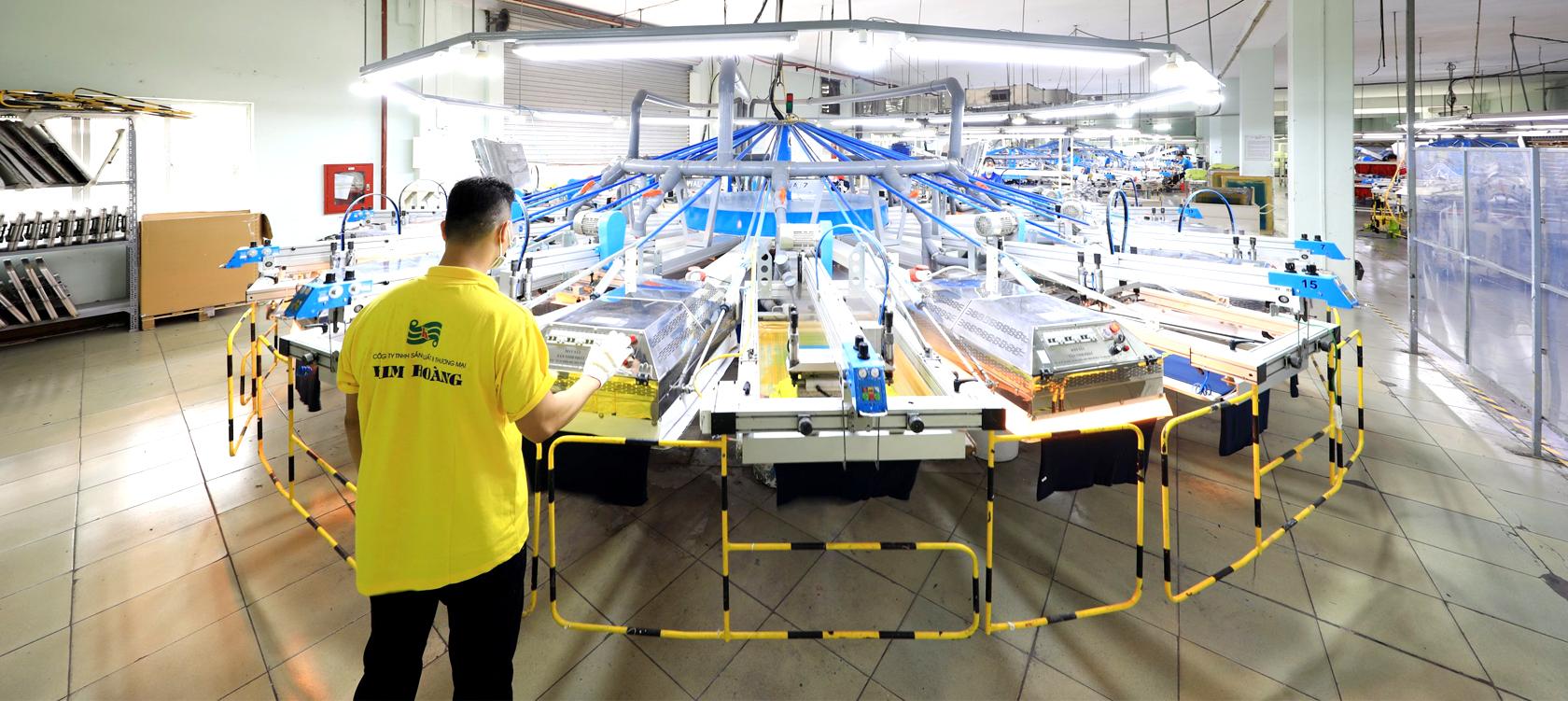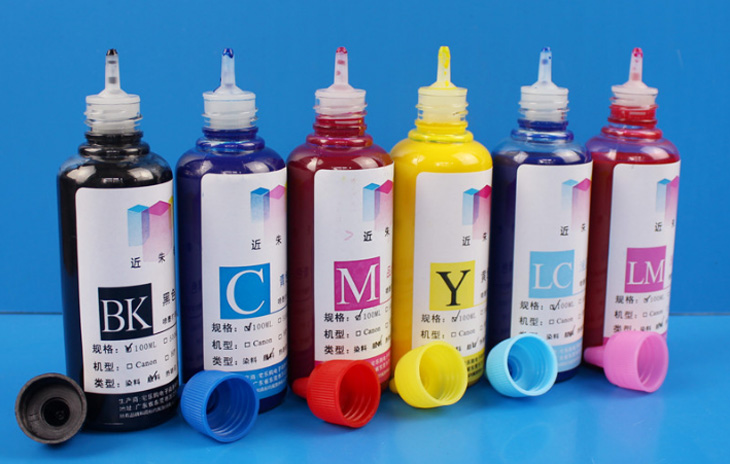Science and technology are increasingly developing, resulting in new technologies constantly being created to better serve the manufacturing industry, so does the printing industry on fabrics. Previously, we heard a lot of the concepts of painting, silk-screen printing, net-printing, craft-printing ... on fabric. Recently, the technology of thermal transfer printing on fabric, also known as digital or 3D printing on fabric, has been mentioned a lot. So what is thermal transfer printing on fabric and what are the advantages and disadvantages compared to other types of fabric printing.
Heat transfer printing onto fabric is essentially a pre-printed copy on heat transfer paper with heat transfer ink, then a heat transfer press to press the print onto the fabric. At this time, the heat transfer ink on the paper will be transferred through the fabric under pressure of the press and the heat of temperature. Usually with different types of fabric, there will be different standards for the temperature of pressing, pressing time, pressure of the machine.
For example, thin fabrics such as wind fabrics, need lower temperatures (about 190 °C) and less time (about 10 seconds) and put the machine to a lower pressure mode, otherwise it will cause fabric shrinkage level or even burnt fabric. Therefore, the process of heat transfer printing on fabric requires workers to be flexible and have certain experiences to apply practically different fabric materials to get the best results.
So is it difficult to transfer heat on fabric and if you want to do it, what kind of equipment is needed? First, at least if you want to join the heat transfer printing industry you must have: a printer using heat transfer ink, heat transfer paper, heat press machine.
Currently, there are many units that supply heat transfer printing materials. About printers and heat transfer presses, there are many brands from China, reasonable price, easy to use, easy to replace components such as: Allwin, Unniversal, Tenda, Grando, Saitu, Kaitu, Alpha, Xkeda, Ifinity , ... .
There are also machines from famous companies from Germany, Italy, Japan such as Epson, Mimaki, Brother, Poly Print, TexTalk ... However, the price is much higher, cost of repair is more expensive but the amortized time will be longer. The size of the machine is very diverse: from as small as A4, A3, A0, to as large as 1.5m - 3.4m ... Heat transfer ink and heat transfer printing paper has two main lines: from China and the famous line. Ink and paper from China are cheaper, the quantity supplied per time is unlimited.
However, if you use Chinese ink, the vendors that sell the machine will not guarantee nozzles - equipment that is easily affected by ink and is the most expensive part of the machine. If using genuine ink, the nozzle depreciation time will be longer, but the cost will increase significantly, affecting the price of the product. So, the question of whether to use Chinese products or genuine ones is actually not difficult to answer. Put in the specific case you print goods: market or company goods, exports? Is there a requirement for the exact image quality? Does the product need to maintain durability too high? You will make your own reasonable choices.

In addition to the above issues, to run a large scale thermal transfer printing factory, you need to set up a spacious, airy factory area, there should be exhaust fans because the production process often has a lot of smoke, fabric dust and a burning smell. The area where the printer and press is located should be separate so that it is not affected by odor and smoke. The printer must know how to use the computer, can read the specifications on the printer. Designers must be proficient in Photoshop, AI, and Corel software because prints need to be sharpened, they must be designed on these software.
The above information has helped you to understand the basic technology of thermal transfer printing on fabric. So, what are the advantages and disadvantages of this technology compared to previous printing technologies on fabric.
First of all, the image quality of thermal transfer printing is extremely sharp and vivid. Because the complex color scheme and the dark and light color spaces are mechanically calculated to each cup, the image is lifelike. Unlike manual mesh printing, each piece of flat color makes it feel like the image is always 2D. Because of this feature, this printing technology is also known as 3D printing or digital printing.
This printing technology is completely mechanical, so you will save labor costs, the quality of the printed goods will be more stable because the machine will calculate for you the quantities of colors, color mixing, color fill.
Time for finished products is faster and more regular. According to general calculations, for every heat transfer printing workshop 1 printer and press, the time speed is usually 3 times higher than that of a manual silk screen worker.
The durability of the printed image cannot be compared with any other printing method. During the printing process, the printout on paper under the heat and the great pressure of the new machine seeps into the fabric, so the durability is usually permanent according to the product. Using detergent and sharpening tools also cannot print off the fabric.
However, this printing technology also has some disadvantages compared to other printing technologies such as: it can only be printed on polymer blended fabric, only can be printed on light-colored fabric, expensive electricity cost, ...

.jpg)



Please enter information content comment